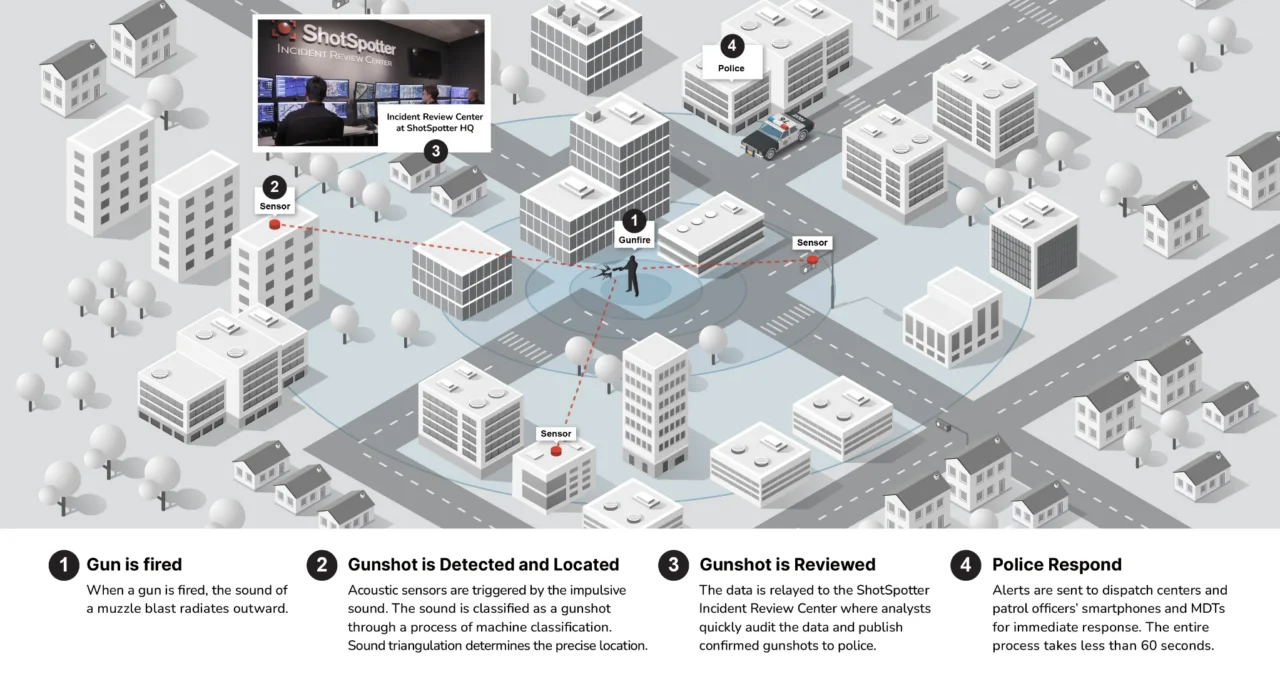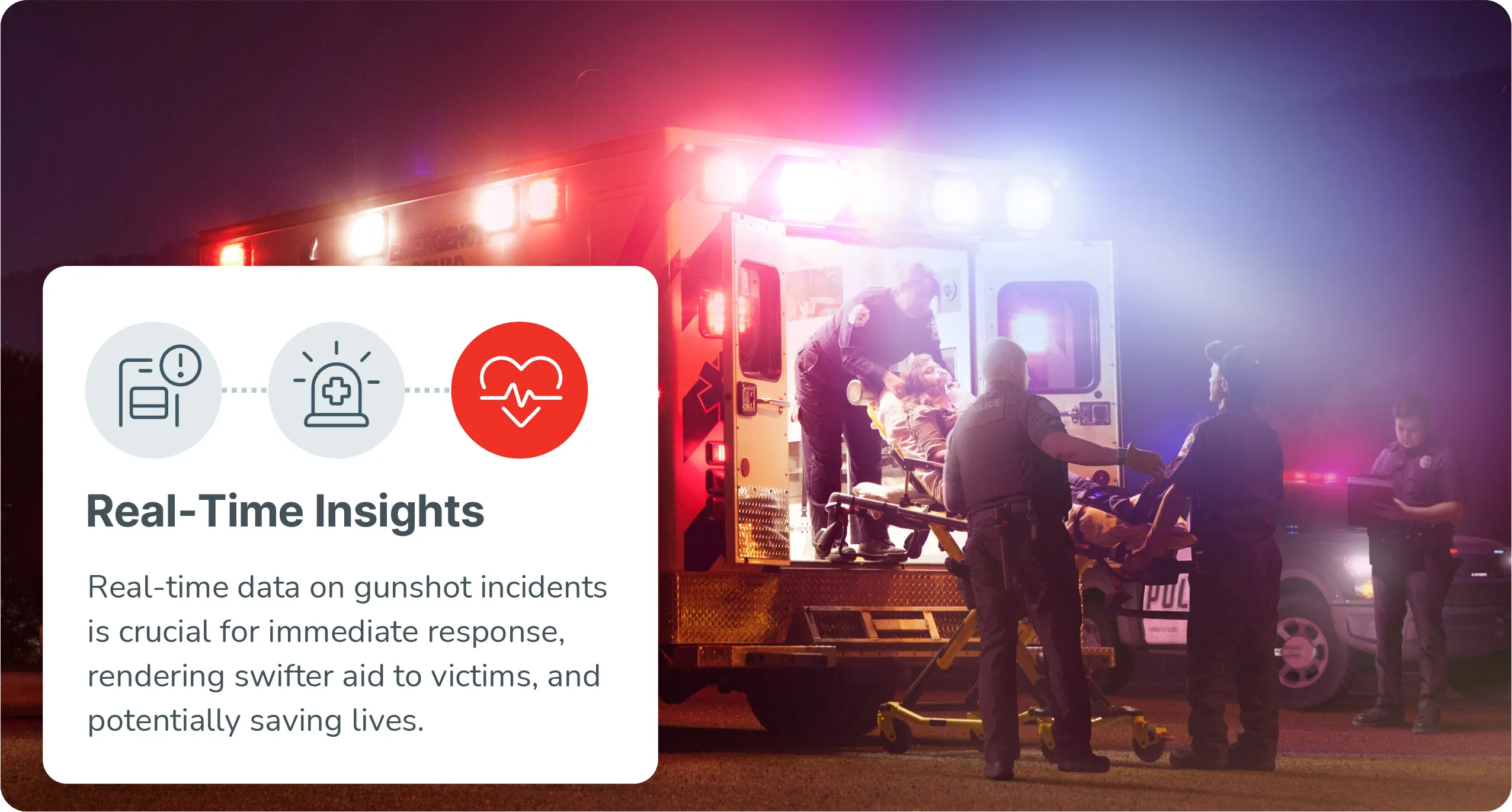In most instances when a city uses ShotSpotter, gunshots are detected, and officers quickly arrive and either recover ballistic evidence or find a shooting victim in time to obtain medical treatment and potentially save a life. In some cases, shooting suspects can be apprehended on the scene, or because of the ballistic evidence recovered, they may be arrested at a later date. The value of these outcomes is very tangible, but is there more? Does ShotSpotter offer any benefits that aren’t as obvious?
Without ShotSpotter gunshot detection technology, police officers must rely on information provided by citizens who call 9-1-1 to report hearing gunshots. While a surprisingly high number of shooting incidents go unreported when a 911 call does come through, the description often given by the caller is that shots were heard “somewhere” in their area, as human ears can’t pinpoint locations the same way audio sensors can. In fact, depending on environmental and weather factors, shots fired from a handgun can typically be heard from one to two miles away (depending on caliber), with shotgun and rifle shots being audible from up to five miles away.* When officers respond to these calls without the benefit of ShotSpotter’s audio triangulation and 82-foot location radius, they are forced to cast a very wide net to determine if a shooting incident occurred. This means more officers saturating a very large area, spending a much longer amount of time searching for victims and evidence, thus giving citizens in that expanded area the feeling of being over-policed. When ShotSpotter alerts to gunfire, officers are given a verified location that a gun was fired within an 82-foot radius, which means they know right where to go and have a much smaller, more reasonable area to search for victims and evidence, eliminating excessive disruption to citizens’ lives when a shooting occurs.
After ensuring that aid is rendered to victims, the highest priority for police officers in shooting incidents is to find the person who pulled the trigger. To accomplish this, officers must rely on the principles of reasonable suspicion, as established by the Supreme Court case Terry vs. Ohio (1968). Reasonable suspicion means that to stop and question an individual, officers must reasonably believe and be able to articulate that a crime did occur, is occurring, or is about to occur, and that the person they stop could reasonably be involved. When a typical 9-1-1 call is received that someone heard shots fired “somewhere” in their area, not only is that information not verified as actual gunshots, but it also stands to reason, based on what we know about the distance from which most gunshots can be heard by human ears, that if a gun was fired, nearly anyone physically capable within that one to five-mile radius could have pulled the trigger. That leaves officers with two options. Stop everyone they see, which is challenging and questionable in its lawfulness, or due to lack of information, stop no one, meaning a potential shooting suspect could be left to go free. Neither outcome is desirable. With the help of ShotSpotter, officers are given verified information that a gun was fired, and a pinpoint location on a map that provides an 82-foot radius from which the trigger was pulled. This gives officers a much smaller, evidence-backed area where a person of interest can reasonably be located, which helps to reduce the probability of unlawful detainment and false arrests.
In police training academies, officers are taught to use the appropriate level of tactical readiness based on situational information. This is particularly essential when responding to calls of “shots fired,” as information is the key to safety. ShotSpotter provides officers with the information necessary to make the right tactical and investigatory decisions to ensure that their actions are both safe and lawful.
While gunshot detection’s purpose seems simple in concept, there are benefits beyond its basic functionality that improve the lives of both law enforcement officers and the citizens they are charged with serving and protecting. By giving officers verified, precise, actionable information, ShotSpotter helps build trust and form partnerships between communities and law enforcement and provides better safety outcomes for all.






